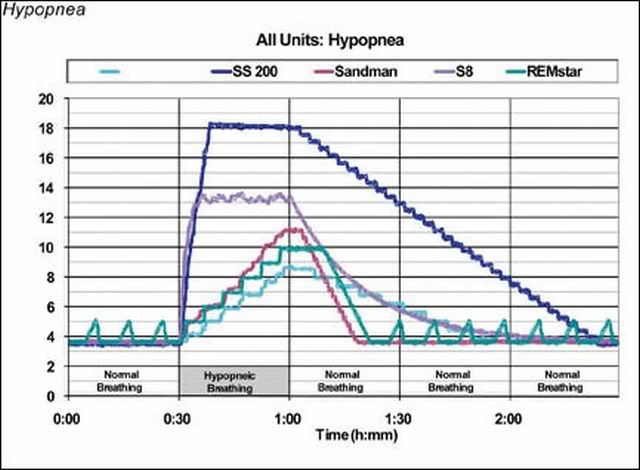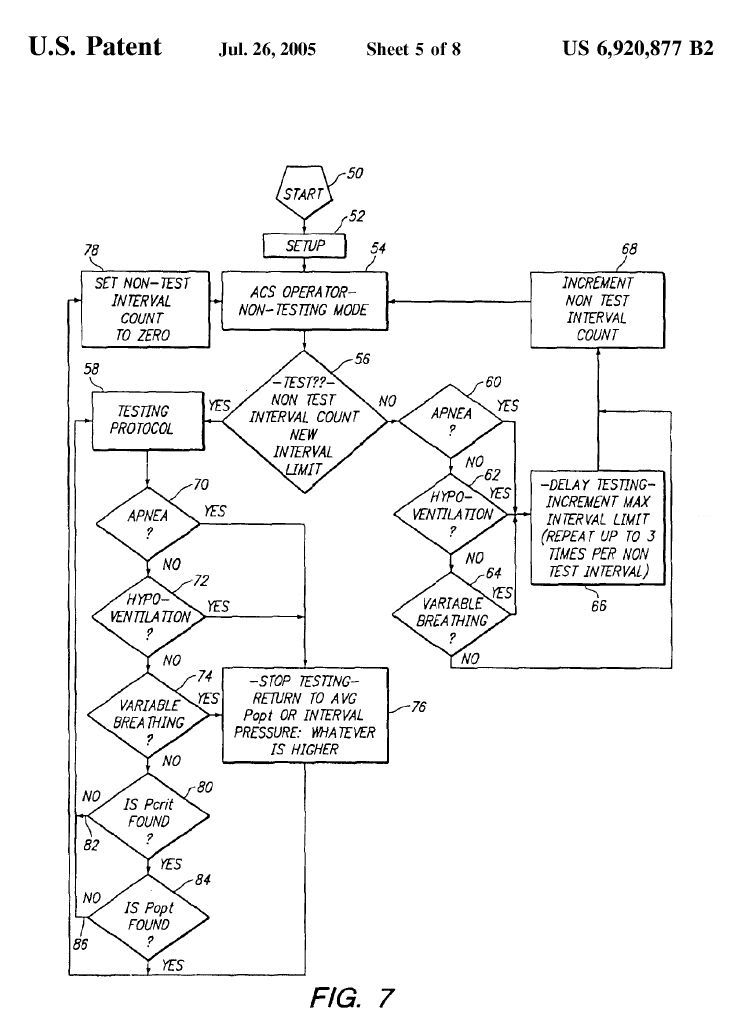Always less successful in choosing my wording than I would hope. Sorry.Muffy wrote: if VB and A/H/FL never appear concurrently, would that not suggest that A/H/FL are NOT reported when VB Mode is active?
In terms of the Respironics 30-second data reporting windows, A / H / FL / VB appear to be mutually exclusive. (I have no formal proof of this - just LOTS of data and no counter-example.)
In terms of my data for the night of 23 August, there are just over 45 minutes (over 90 windows) of ALMOST continuous VB entries - with the exception of five discrete (non-contiguous) windows in which the "state" of VB is NOT indicated but other "events" (1 A, 4 H) are reported. Two possible explanations immediately arise in my mind: 1) either we are in the "state" of Variable Breathing for the entire 45 minutes, and despite that "state", these five events were detected and "allowed" to be reported (in preference to reporting continuing VB), or 2) during that 45 minutes the VB state "ended" five times, at which moments there "happened" to be A or H events which were duly recorded, such events also triggering resumption of the VB state. Again, I can't prove it, but the first explanation seems a lot cleaner.
I have no way of knowing when I was "awake," but I have indicated on the graph when I was awake AND turned off the blower: I have inserted "zero pressure" entries when I arose to the bathroom (at "relative times" 5:00:41 and 7:47:21) and when I finally got up in the morning (at 9:30:50). Prior to the 5:00 arising, the last recorded "event" was the end of a "run" of VB about 7 minutes prior; I don't consider this temporally related. Prior to the 7:47 arising, a "run" of VB had ended just 30 seconds earlier; I had mentioned in a prior post that this seems to occur with some frequency. The same situation, with a VB "run" ending 30 seconds earlier, preceded my final arising at 9:30. Again, no other respiratory events, and no changes in pressure or leak patterns, precede my arisings. (I typically average 3 spontantous arisings nightly.) Beyond that, I have no useful information.Muffy wrote:Also, how would you rate the quality of your sleep, including periods of wake, relative to events on the graph?
Velbor















